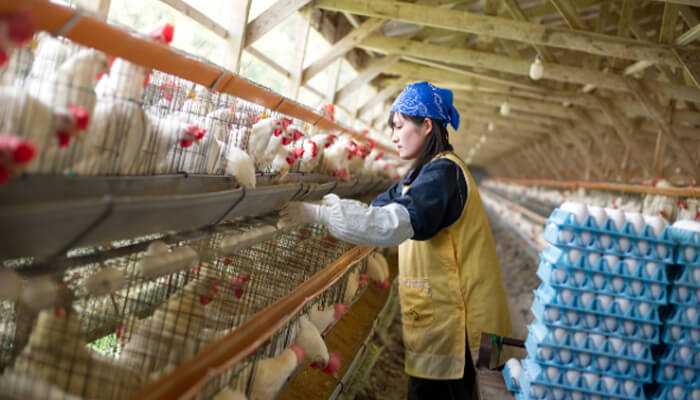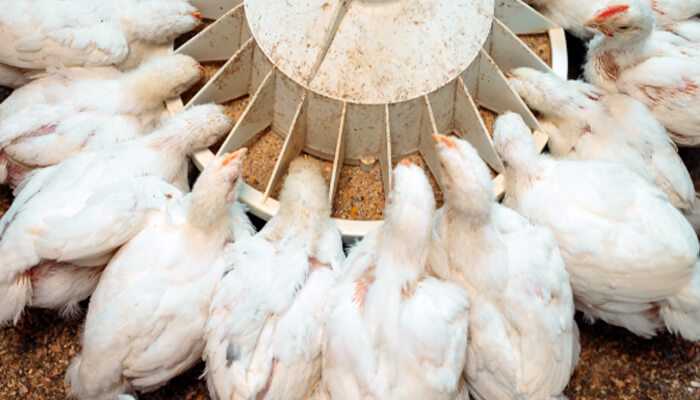The agriculture sector, a cornerstone of human civilization, has always embraced innovation. Today, nowhere is this truer than in the poultry health industry, where the stakes for innovation are high.
Challenges such as disease management, productivity optimization, and the pursuit of environmental sustainability drive the industry forward. How can we, as stewards of the land and caretakers of poultry, rise to these challenges? Let’s explore.
The pursuit of innovation is not just an option; it’s a necessity for the survival and growth of the poultry industry. As consumer demands evolve and environmental pressures increase, the industry must adapt. This adaptation is fueled by a commitment to research, and development, and a willingness to embrace change.
The Evolution of Poultry Farming
Historically, poultry farming was a largely manual endeavor. Farmers relied on their intuition and experience to manage their flocks. However, the past few decades have witnessed a paradigm shift. The traditional methods, while still valuable, are being augmented (and in some cases replaced) by technology and innovation.
This transformation is not just about keeping pace with demand but about setting new standards for health and productivity. The transition to more innovative practices represents an acknowledgment of the limitations of past approaches and the potential of new ones.
As we delve into the evolution of poultry farming, we find a narrative of constant improvement and adaptation. This story is not only about technological advancement but also about the industry’s growing understanding of animal welfare and environmental stewardship.
Technological Advancements in Poultry Farming
Enter the era of automated feeding and watering systems, precision livestock farming, and the application of artificial intelligence. These technologies are not merely conveniences; they are revolutionizing the way we approach poultry farming.
Automated systems ensure optimal feeding schedules and water delivery, minimizing waste and promoting health. Meanwhile, sensors and IoT devices monitor health and behavior in real time, offering insights that were once impossible to gather. Predictive analytics powered by AI can forecast disease outbreaks, allowing for preemptive action. The precision and efficiency these technologies provide are unmatched. Beyond these, advancements in lighting and climate control systems have further enhanced the living conditions within poultry houses, contributing to better growth and lower stress levels among birds.
The integration of blockchain technology for traceability ensures transparency and trust in poultry products. These innovations not only optimize farm operations but also address consumer concerns about food safety and animal welfare.
Sustainable Practices for Healthier Poultry
Sustainability is more than a buzzword; it’s a necessity. Here, the rolling chicken coop offers a case study of innovation. By allowing chickens to move across the farm, these coops ensure birds have access to fresh ground regularly. This not only improves the health of the poultry by reducing the spread of parasites but also enhances soil quality. Organic farming practices, intertwined with these sustainable strategies, further promote the health of both poultry and the planet.
The adoption of such practices underlines a holistic approach to farming, where the health of the animal, the land, and the consumer are intertwined. Water conservation techniques and renewable energy sources are also becoming integral parts of sustainable poultry farming. By focusing on sustainability, farmers are not just improving their practices but are also contributing to a larger environmental ethic that values resource conservation and ecological balance.
Nutritional Innovations for Enhanced Productivity
Nutrition is the foundation of poultry health and productivity. Scientific advancements in feed formulation and supplements are enabling farmers to support their flocks better than ever before. Tailored nutrition plans, informed by the latest research, can boost growth rates, enhance immune systems, and optimize overall health.
The right nutrition is a powerful tool in the quest for productivity. With the advent of probiotics and prebiotics in poultry diets, gut health has significantly improved, leading to better nutrient absorption and reduced need for antibiotics. Enzymes are being integrated into feed to break down difficult-to-digest components, further enhancing efficiency. The development of vaccines delivered through water systems exemplifies the innovative crossover between nutrition and disease management.
Such nutritional strategies not only improve the physical health of the poultry but also contribute to the overall sustainability of farming practices by reducing waste and enhancing feed conversion ratios.
Disease Management and Biosecurity
In the battle against disease, knowledge is power. Modern biosecurity measures and disease management strategies are a testament to the power of innovation. Vaccination programs, stringent farm hygiene practices, and the strategic use of antimicrobials are all part of the contemporary farmer’s arsenal.
By prioritizing biosecurity, farmers not only protect their flocks but also contribute to the broader effort to combat antibiotic resistance. The development of rapid diagnostic tools has transformed disease management, allowing for quick identification and isolation of infected birds. The emphasis on integrated pest management reduces the reliance on chemical treatments, promoting a healthier farm environment.
Training and education for farm staff on biosecurity practices have become more sophisticated, reflecting the complexity of modern poultry operations. Collaboration between farmers, veterinarians, and researchers has been crucial in developing and implementing effective disease management strategies.
The Future of Poultry Farming
What does the future hold for poultry farming? The potential is vast. From gene editing for disease resistance to the development of new, more sustainable breeds, the possibilities are as exciting as they are endless. Continued investment in research and development is crucial. The innovations of today lay the groundwork for the practices of tomorrow. The exploration of vertical farming and urban agriculture presents new opportunities for the poultry industry to expand in unexpected ways.
The increasing consumer demand for transparency and ethical farming practices will drive further innovations in animal welfare and farm management. As we venture into this future, the collaboration between technology companies and farming communities will become ever more important, blending traditional knowledge with cutting-edge science to meet the challenges of the 21st century.
Conclusion
Innovation in poultry farming is not just about adopting new technologies; it’s about embracing a mindset of continuous improvement. It’s about facing the challenges of today with the tools of tomorrow. As we look to the future, let’s do so with optimism, knowing that the path to enhanced poultry health and productivity is lit by the light of innovation. In the end, the journey of innovation in poultry farming is ongoing.



